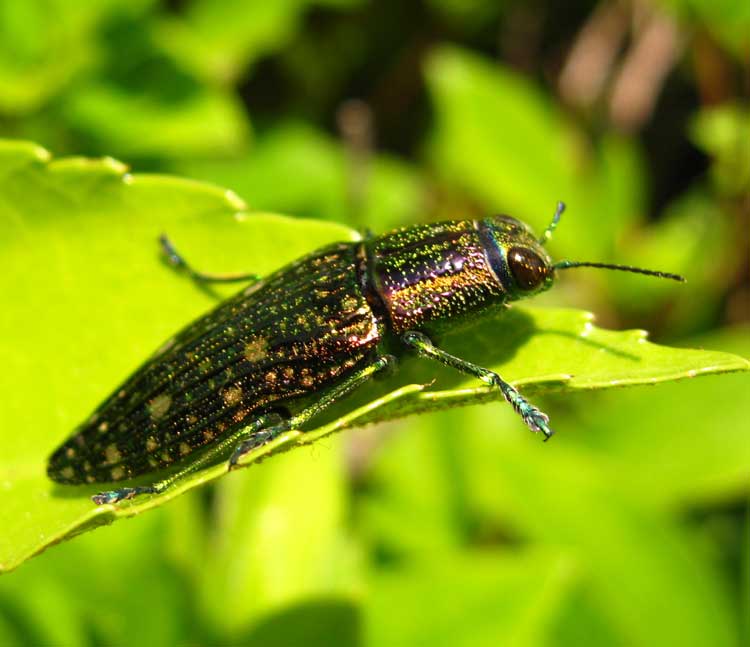
Chalcophora japonica (*)
Superregnum: Eukaryota
Cladus: Unikonta
Cladus: Opisthokonta
Cladus: Holozoa
Regnum: Animalia
Subregnum: Eumetazoa
Cladus: Bilateria
Cladus: Nephrozoa
Cladus: Protostomia
Cladus: Ecdysozoa
Cladus: Panarthropoda
Phylum: Arthropoda
Subphylum: Hexapoda
Classis: Insecta
Cladus: Dicondylia
Subclassis: Pterygota
Cladus: Metapterygota
Infraclassis: Neoptera
Cladus: Eumetabola
Cladus: Endopterygota
Superordo: Coleopterida
Ordo: Coleoptera
Subordo: Polyphaga
Infraordo: Elateriformia
Superfamilia: Buprestoidea
Familia: Buprestidae
Subfamilia: Chrysochroinae
Tribus: Chrysochroini
Subtribus: Chalcophorina
Chalcophora generic group
Genus: Chalcophora
Species: Chalcophora japonica
Chalcophora japonica, or ubatamamushi in Japanese (Japanese kanji: 姥玉虫, katakana: ウバタマムシ; lit. 'nanny jewel bug'), also known as the flat-headed wood-borer, is a metallic, bullet-shaped, woodboring beetle of the Buprestidae family. It is endemic to Japan.
Habitat and appearance
This insect is commonly found on the islands of Honshū, Shikoku and Kyūshū. The white, legless larvae are tadpole-shaped and grow to 8–50 millimetres (0.3–2.0 in) in length,[1] while adults reach a length of 24–40 millimetres (0.9–1.6 in) in length[2] and have brown and black stripes with gold flecks running the length of the body. This species is present from May through August and is attracted to sun, preferring to fly during the hottest part of the day, feeding on young buds and tree leaves.[1]
Reproduction
The larvae are ideally adapted to woodboring, being dorsally flattened with a broad thorax. Females lay approximately 75 eggs in the crevices of bark or on wounded trees and sometimes in the exposed beams of older houses where they become serious pests. The larvae tunnel under the tree bark where they vigorously feed on wood. The larval stage of this insect may last for many years. Occasionally males are selectively killed at the embryo stage by bacteria known as Wolbachia. This can result in a limited number of males in the population. Females lacking a male can then reproduce using an asexual form of reproduction known as parthenogenesis.[1]
See also
Woodboring beetle
References
Hooper, Rowan (May 27, 2004). "Wood-boring beetle". Japan: The Japan Times Online. Retrieved 19 August 2009.
(学研の図鑑)昆虫 (in Japanese). Tokyo, Japan: Gakken. 1986. p. 55. ISBN 4-05-102259-5.
Retrieved from "http://en.wikipedia.org/"
All text is available under the terms of the GNU Free Documentation License

